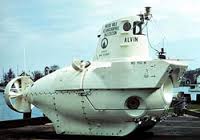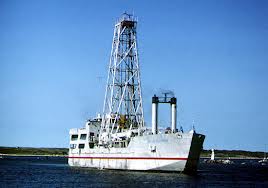Finding Titanic
/Robert Ballard dreamed of becoming an underwater explorer ever since reading Jules Verne’s 20,000 Leagues Under the Sea as a young teen. Those dreams would one day lead him to discover a shipwreck thought to be too deep to ever be found: the RMS Titanic.
Dr. Robert Ballard
Armed with dual degrees in chemistry and marine geology from the University of California, Robert Ballard moved to Boston in 1967 and began his career at Woods Hole Oceanographic Institution. An accomplished scuba diver, he joined one of the world’s oldest diving clubs, the Boston Sea Rovers. It was there where his interest in shipwrecks took hold.
In 1973, a research submersible known as Alvin could reach a depth of 6000 feet. Scientists at Woods Hole used Alvin to study marine life and geology in the world’s oceans, but Ballard was frustrated by its inability to go deeper. When Alvin’s steel hull was replaced with one made of titanium, it was then capable of diving twice as far, up to 12,000 feet. At the time, this was roughly the depth Titanic was thought to rest in.
Alvin
Ballard became obsessed with finding the famous ship. In 1977, he decided to search for the Titanic using the Alcoa Seaprobe, a drilling ship owned by Alcoa Aluminum. He had to convince Woods Hole to back him, which they eventually did, even though some at the company thought him to be interested only in self-promotion. He built a new equipment pod and made other adjustments necessary for the venture. The journey began in October 1977, but a mistake in the building of certain components in the rigging caused the whole thing to break and fall into the sea.
Alcoa Seaprobe
Others took up the challenge to find the Titanic. Ballard watched, finding it difficult to obtain backing after his failed attempt. Using the best team of scientists and researchers available, expeditions were conducted in 1980, 1981, and 1983 by Texas millionaire Jack Grimm, but to no avail.
During this time, Robert Ballard continued to dream of locating the ship himself. He worked at developing a new way to do underwater research without using a manned submersible like Alvin. Instead, cameras would be mounted aboard a robot and images sent back to the team on the surface. He also focused on finding Titanic’s debris field, which would most likely cover a much larger area than just the ship itself. If he could find the debris field, he reasoned, it would lead them to Titanic.
In 1984, Ballard had perfected the new system, known as Argo, and assembled a team from Woods Hole to find Titanic. The U.S. Navy agreed to fund a three week long test of Argo in the summer of 1985, provided the Woods Hole crew would also locate and photograph the remains of the US Navy nuclear submarine Scorpion.
Argo
I hope you’ll join me again next week when we’ll take a look at what happened.




